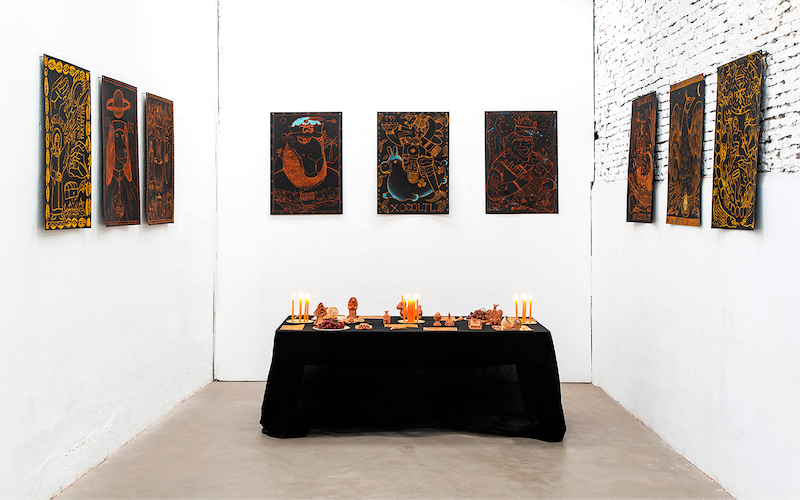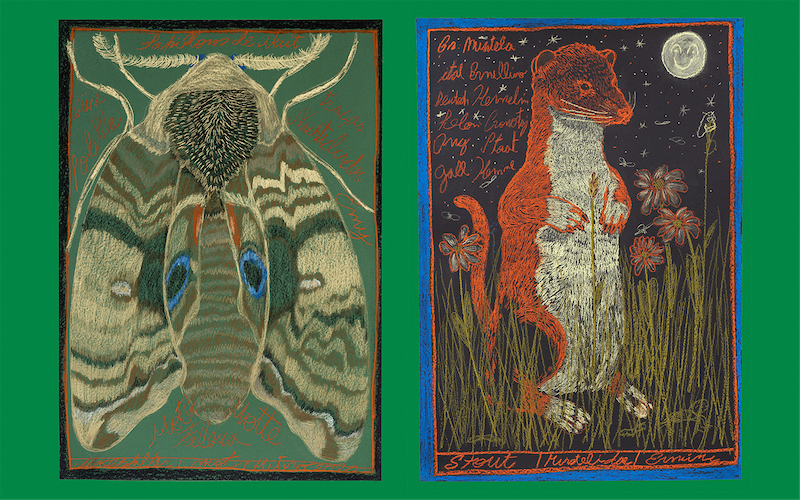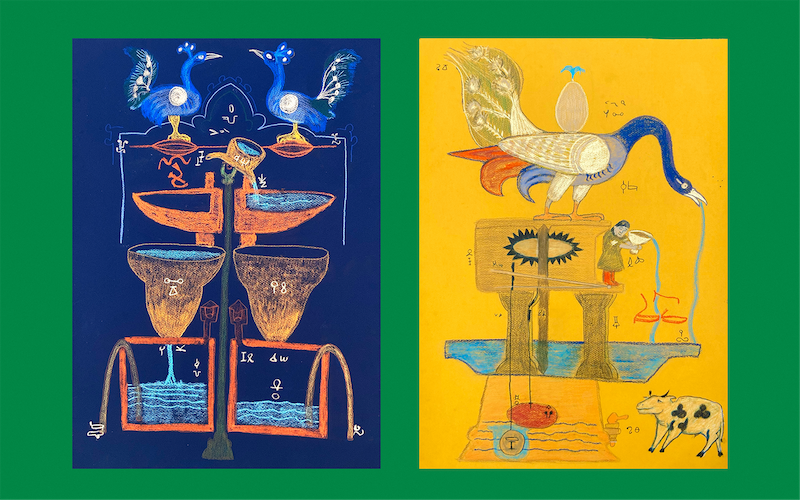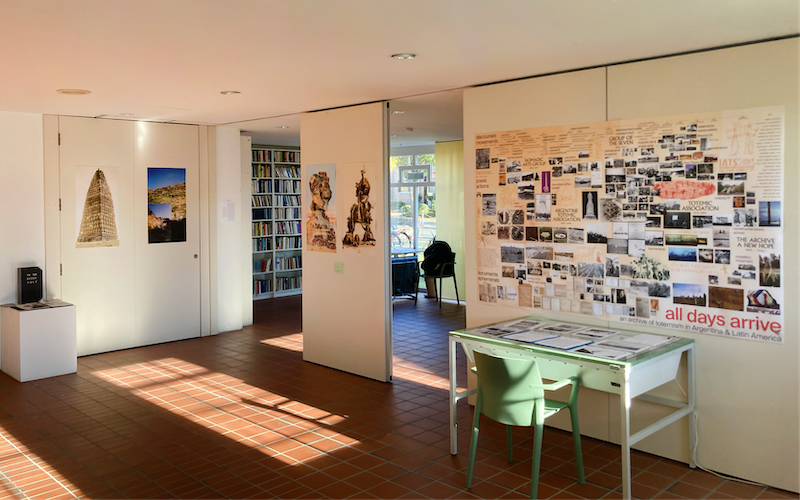What’s your creative practice?
Right now I’m trying to focus on what makes a discourse or image believable or what can work as a mechanism for truth or proof.
I playfully use aspects of our cultural global heritage in my work. I seek to have fun with the images our culture has accumulated. We live in a huge sea of images and we don’t know what to look at. The image has lost its power or we have become numb while at the same time being really addicted to images. I think there’s some truth in trying to hold people’s attention on one image or art piece.
What do you mean with there’s truth in it?
There’s something that unlocks, a very pure moment, where people can have an aesthetic experience, something that appeals to senses.
As a graphic designer and as an artist, I am very inhabited by notions of beauty and composition, how an image should be constructed and sometimes it’s hard to escape that. I try to deconstruct the process of image making as I move forward in a series of drawings or while working on a book. I find I can be very structured and things become fun when I find little cracks, when something genuine has detached itself from the image culture we have canonized as being “good” or that has proven to be “good.”
A Choral History of a Piece of Heaven, soft pastels on black paper and ceramics, solo show in 2023.
Okay. Wow. That’s just opened up so many tabs in my brain…but let’s go back to structure and cracks. What do you mean when you say you are very structured? Are you speaking about having to do money jobs like graphic design work? Or are you just generally a very structured person?
I feel like a lot of academic learning is rooted in me. I feel that I know what beauty looks like to me and I’m devoted to creating beautiful things and likeable things. I’m not talking about universal laws—I’m just talking about me.
You’re talking about what you think is beautiful?
Yes.
As a graphic designer who went to university?
Good question. I feel like going back to what I said, that we’re living in an ocean of images, what’s statistically beautiful or the spectrum of beauty has already been shaped from the inside to the outside. So, the outside would be what’s the limit between beauty and non-beauty. But inside there’s a safe zone where you say, “Okay, this is beautiful.” The image of a white puppy in the grass. That is canon beauty, right? Something that is charming.
And as you go outside these limits, then you can find things that hold beauty but not in a very clear way.
I jump between canonized beauty/safe beauty and a zone that’s no longer secure. And when I’ve reached that point I believe I begin creating something worthwhile.
Nacht Aktive Kreaturen von Schöppingen, soft pastel and color paper, series of folk art show 2022 in Schöppingen, West Germany.
When you go to the cracks?
Exactly. For example, a crack could be not the language in which this theme is being embodied but the theme itself. An example could be my project on the Holy Foreskin. That’s not something we’re going to like in our minds as we say it. When I tell the story, I use the same strategy Christianity has always used: create compelling images, made of gold, appealing to the senses so that people who cannot read will not just believe in god but in the entire story, all the characters in the Bible. That’s why they used to call the church the poor people’s Bible. Those who were illiterate could use the images to understand what they could not read.
Can you tell me more about the Holy Foreskin project?
Yes. When I told the story of the Holy Foreskin, I tried to create this corpus of images that could deliver the story to anyone no matter if they had heard of the Holy Foreskin or not. Hearing those two words is already a head fuck but I think it was a story worthy of telling.
Tell me more about this.
I’ve always been fascinated by medieval representation because I find there’s a little bit of a crack between perspective and deepness or profoundness in the image like different layers of depth are thrown at you in a way that perspective organizes these levels, these layers.
Instead, in medieval representation, you find…I don’t know, if you see a map, Rome is in the center of the world and Israel is next to Rome or you see people with faces in their torsos. Everything is super weird. And it’s because it’s not an age where people believe in God. It’s an age where God was present, was a subject, was everywhere. It is not a matter of belief, it’s a matter of an alteration between these worlds, the magical world and the so-called real world.
Editorial & Design work, some published by Bucle Editorial and some as consultant.
So I’ve always been interested in medieval stories, medieval representation, and I came across the forgotten story of the Holy Foreskin, which is about Jesus Christ’s foreskin. He was circumcised eight days after he was born. Those present decided to ignore the tradition of Judaism and instead of burying the skin, they conserve it in a jar. It’s like an original sin because they ignored the tradition, and created merchandise for this new religion. 1500 years later there were still a lot of churches in Europe claiming to have the original foreskin. So this is the first NFT. “Do I have the real one? Which one is the real one?” They were all fighting to have the actual thing. I find it interesting how religion and belief can be embodied in an object and the expectations around this object has the power to transform reality.
And what was your artistic approach to this subject matter?
I teamed up with a friend who’s a scriptwriter, and he started to develop texts and I started to develop images. We both gathered information, videos, anything that was said about this famous piece of skin.
We were fascinated by something so sacred being so unholy at the same time. The idea of Christ’s circumcision really brings you back down to earth. We put on an exhibition showing my visual work and my friend’s textual work. We had written dialogues between the people that had come across this relic.
Obviously referencing and hypertextuality plays a role in your work…
To me hypertext is a dialogue or a link between themes that start to create hybrids out of the juxtaposition or superposition of different links.
You create a piece of art and then you start to see it in a context and you see, okay, the hypertextual body of this work may be artists from Rio La Plata. You were doing religious art in the 16th century and you believe, or I believe that I am in a long line of artists who’ve been working with this subject. And that’s where I start to see how hypertextuality works. It’s not only the themes that you bring up, but also the praxis that you take from someone that has already put down the torch and you pick up the torch to continue the work of others.
Totem in Quintana Roo, Mexico, 2019.
I was thinking more of hyperlinks than hypertexuality…
It’s the same. I spend a lot of time on Wikipedia. I have multiple tabs open all the time, on my computer and in my mind. It’s very hard to organize them. It’s a practice on its own to research and organize this material and articulate your findings because if you don’t it’s just raw material. A hypertext means you’re reworking the assets you have found.
Would you say that hypertexting is a technique you use as an artist? Or is it the art itself?
I think hypertext is something that’s a part of me. I grew up playing with Encarta encyclopedia, clicking from one article to the next. This way of working is part of me. And as a kid using the early internet, I was fascinated by this. It felt like one could access the whole world. And of course it was an era of unverified information. That made the information gossip and that was also what made it interesting.
We could say that anything anyone does is hyperlinking because we only ever exist in the context of others. But I would say, compared to other artists I have talked to, you really give it a name, and speak of it and it does seem to be a very active and conscious technique of yours.
Yes. I feel that in my work, paraphrasing, quoting, and contextualizing the work of others is very important. I’m working on a book on the totemic association for which I’m quoting people that never existed. I am trying to give density to a world that’s supposed to be hyperlinked with everything we already know but the links are not developed. I am mixing things that really happened with my own fiction and am creating new hyperlinks…I am creating gossip rather than information.
The Book of Titicks, series of drawings, 2024.
The book is about a totemic association that never existed. You are working with the association’s archive in this book which of course also doesn’t exist. You are creating all the characters who were part of the association and people that are using its archive. You’re mixing and blurring fact and fiction and are, in this case, very intentionally fictionalizing the hypertexts you are presenting.
Exactly. And with the hope that, when the book is done, people who consider their practice to be related to Totemism can join the association. From fiction to action.
From fiction to action.
Yes.
That’s cute. That’s a good T-shirt slogan. Another slogan of yours that could work well on a T-shirt is: Taste over technique.
I think it’s important for every creator to be aware of the many formulas that have already been proven, that are effective or at work. There’s no joy in repeating them. As a creator it makes no sense to follow a technique-driven path. But with that said, I’m not diminishing the importance of technique, but I value a person’s taste more than their technique. Usually if the output is technically very good and there’s not much subjectivity I get bored in an instance. I feel that taste talks about a person and the person doing it makes it interesting.
Just to play like devil’s advocate: Isn’t whatever technique you use also a result of what taste you have?
Yes, but I mean, painting. Okay, painting, it’s a huge universe of what can be done and it doesn’t say that much about your taste that you’ve picked painting as a technique. But let’s say if a person makes melted glass pottery from a cast of a bee hive then we can say,”Okay, the technique is really talking about the actual interests and tastes and perversions of this person.”
Sebastián “Chebo” Roitter Pavez Recommends:
Book (fiction): Comemadre, by Roque Larraquy
Book (research): Earth is an Architecture
Song: “The Blessing Song” by Michael White
Playlist/Artist: Arthur Russell
My creative recommendation can be summarized as taste over technique, I believe it is quite liberating as a personal motto to see the creations as extensions of taste, of yourself, rather than an object that needs a sort of wrapping or coating to be by itself out there.
Research installation for a future book ALL DAYS ARRIVE.
This content originally appeared on The Creative Independent and was authored by The Creative Independent.
The Creative Independent | Radio Free (2024-05-08T07:00:00+00:00) Visual artist, graphic designer, and writer Sebastián Roitter Pavez on valuing taste over technique. Retrieved from https://www.radiofree.org/2024/05/08/visual-artist-graphic-designer-and-writer-sebastian-roitter-pavez-on-valuing-taste-over-technique/
Please log in to upload a file.
There are no updates yet.
Click the Upload button above to add an update.





